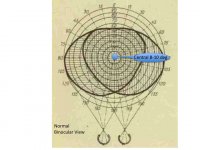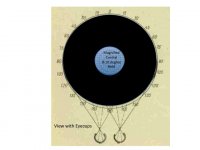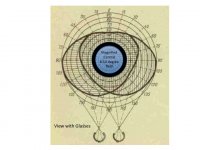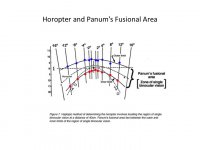Kimmo, Ron, jgraider, et al,
I certainly agree with jgraider that they are a "phenomenal glass." In fact, in my book they surpass any glass I've owned or examined to date. Others may prefer some other optic, so this is just my personal reaction.
These musings are a continuation of several short discussions with James Holdsworth and Looksharp65, concerning eyecups and the perception of
the view that is related to them.
http://www.birdforum.net/showpost.php?p=2319703&postcount=51 So, this may not be particularly credible or even relevant to those who don't have experience using eyeglasses, — and that's OK. Nonetheless I posit that eyeglasses have special advantages when it comes to using birding binoculars. I've searched for supporting literature, but to no avail. It doesn't seem to be a topic that has attracted research or pundits in either the optics or human factors communities. The issue may also be somewhat taboo, because we cater to the young and healthy, and I'm admittedly turning things on their head to some extent.
This is a also work in progress, as I have not completely fact-checked my thinking, but here is the essence. Our normal 180º (approx.) field of vision is shown in the left panel. The two fields of view for each eye overlap by about 120º, which gives rise to stereoscopic vision. Thirty degree areas on the extreme left and right of the field, however, are monocular for each eye and remain totally unseen by the other.
The purpose of binoculars is to magnify the central 8-10º of the field, depending on its true field of view.
Let's assume that our binoculars have an apparent field of about 60º, which is typical for most roof designs. As shown in the second panel, the magnified area of the scene pretty much takes up half the normal overlap area on the retina, — and then the eyecups black out everything else. Unmagnified information that might be projected on the outer portion of the overlap area or the periphery of the retina is lost and can't be used for object motion detection, or to provide perspective cues for spatial orientation. Also, what this does to retinal adaptation is rather unnatural because the non-stimulated areas 'dark adapt' and the stimulated areas 'light adapt'. (Yes, contrary to what some may think, the retina is capable of non-uniform adaptation. That's another story.)
Panel three shows the same situation with eyeglasses, where the outer region is largely left in tact, except for a contact ring of varying thickness just outside the magnified area. For the Swaro 8x HD this ring is rather narrow by comparison with other binoculars, so narrow that it almost doesn't seem to be there. The transmission of the binoculars is so good that the magnified center works seamlessly with the periphery for "in the trees" birding as well as "out yonder" birding at the shoreline.
Anyway, I have several connections to make with the vision literature, but for now that's the underlying basis of my thinking. My eyeglasses also have "transition" lenses, a modern technology that modulates light so nicely that I'm not even aware when they are dark or light. That's true with or without the binoculars.
The last panel, incidentally, shows the 'visual horopter' and 'Panum's fusional area,' which underly stereopsis in the overlap area of the two visual fields. These, I believe, need to be taken into consideration if one is to understand why having a flat field has different implications for terrestrial vs astronomical viewing.
Sorry to be so verbose.
Ed
PS. Graphs and text have been corrected from the first post. I was going too fast. It would seem that some of the outer overlap area can also be seen using glasses, making for a very interesting blend of visual information, which I don't think is beyond the brain's capacity to use. This may be why I find using glasses stunningly effective in woodland birding.








